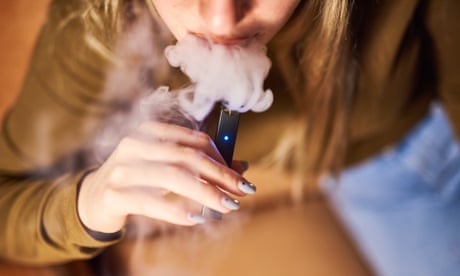Extract from The Guardian

It’s no coincidence that the alarming rise in teenage vaping has occurred alongside the explosion in shops selling colourful and cheap devices that look, smell and taste like lollies. The Australian government’s decisive plan to end this easy access to these dangerous and highly addictive vaping products is both welcome and timely.
On paper, Australia has what should be strong regulation to protect young people from vaping products. You must have a prescription from a doctor to legally access nicotine-containing vaping products. However, there are currently only very weak restrictions on non-nicotine vapes. This has allowed vaping product importers and retailers to undermine the prescription-only access laws. Vapes containing nicotine, posing as non-nicotine products, have flooded into Australia, and ended up in the hands of children and teenagers. This total disregard for public health has led to the vaping crisis we are facing.
A crucial component of the government’s plan will end the importation of all vaping products, regardless of whether they contain nicotine or not, unless they are part of the prescription-only access pathway. The plan’s emphasis on working with Australian state and territory governments to also remove all vaping products for sale at general retail outlets, such as petrol stations and convenience stores, will ensure that retailers can no longer claim to be selling “non-nicotine” products. Schools and parents have been calling out for this action. They have been forced to police vape use in school yards and toilets in the face of vape retailers surrounding community schools.
We know that Australian teens who vape prefer disposable devices in fruity and confectionary flavours that contain nicotine. Disposable vaping products, some containing the same amount of nicotine in 50 or more cigarettes, will be banned under the health minister’s plan.
Teens and children have been preyed on by an industry that has designed products to appeal to young people. This same industry claims to only be interested in selling vapes to adult smokers who have tried everything they can to quit smoking and need vapes as a harm reduction product. The plan to reduce teen access to vapes also includes ensuring that vaping products are only sold by pharmacies in medical-style packaging, with limited flavours. This will reenforce that vaping products must only be used under the care of health professionals by smokers trying to quit.
Opponents to these reforms will claim these actions are equivalent to prohibition and will discourage smokers from using vapes to quit smoking. But the majority of smokers support measures that protect children from both vaping and smoking.
Enabling adult smokers to safely access vapes must be balanced against normalising vape use among teens. The government’s plan includes a significant increase in support to help both smokers and vapers to quit.
These proposed vaping reforms have been paired with renewed action and much-needed investment in tobacco control. Especially welcome is news that the successful tackling Indigenous smoking program will continue to be funded and expanded to include vaping.
In 2012, Australia was the first nation in the world to require tobacco products to be sold in plain packaging with only graphic health warnings to grab your attention. A whole generation of Australian children, who are about to become teenagers, have never known that cigarettes used to be sold in colourful boxes with sleek and shiny finishes.
These same children have been exposed to a tidal wave of eye-catching vape products that have left them vulnerable to lifelong nicotine addiction.
The government’s announcement puts Australia back at the front of the pack.

No comments:
Post a Comment